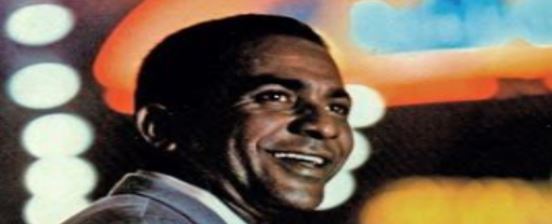In this series of blogs, I’ll walk through the development and spread of the “Bolero Filin“. While I researched this Cuban music genre, I found interesting connections to more contemporary Latin music genres and artists in several countries.
The Start of the “Filin” Movement
In the Cuba of 1940’s, a group of young musicians began meeting to experiment with ways to expand the range of expressions they could use in the Cuban “bolero”. They were seeking a way to add more freedom in how to perform this genre. From those meetings, a new Latin music genre called the Bolero “Filin” was born.
The “Filin” is a derivative of the Cuban “Bolero” that was influenced by American music. It has also been characterized as an evolution from “Trova” and the “Cancion”. Although sometimes it is complicated to describe what the “filin” is, its name comes from the word in English “feeling”. This is due to the high degree of emotion that singers and songwriters add to their songs.

The “filin” started in the late 1940’s, developed into the 1950’s, and continued to enjoy great popularity through the 1960’s and beyond. Its roots are traced to the “Cayo Hueso” neighborhood of Havana, Cuba. There, singers and songwriters met at the house of troubadour Tirso Diaz to help shape an innovative style of performing the “bolero”.
This new style was influenced by American artists like Ella Fitzgerald and Sarah Vaughan. Additionally, even Nat King Cole, who visited Cuba frequently, help popularize it. Some of its roots are said to come from the “blues”, but keeping the Cuban music essence.
What is the “Bolero-Filin”?
The “bolero-filin” is characterized by compact harmonies and songs with more complicated melodies. Here each singer gives his/her own sentimental “brand” to the song. It differentiates from the “bolero” in that the “bolero” is more danceable.
The two artists most directly linked to the start of the “filin” movement were singer songwriters Jose Antonio Mendez and Cesar Portillo de la Luz. Olga Rivero was also an early popular singer of the “filin”. However, she moved to Mexico, married, and retired soon after.
In the video below, Jose Antonio Mendez sings his classic “Si Me Comprendieras”. This song showcases the “filin” style elements in his performance.
Popularity of the “Filin”
The “filin” movement quickly spread from Cuba to Mexico, New York, and Puerto Rico. Jose Antonio Mendez went to Mexico en 1949 and stayed until 1959. There he popularized the “bolero-filin” by playing in night clubs, in the radio, and recording 5 LPs during that time. Cesar Portillo de la Luz also visited Mexico often, as well as Martha Valdes and Elena Burke.
Cuban singer Pepe Reyes spread the “filin” movement to South America. Initially Reyes stayed various years in Colombia. Later he had stays in Argentina and Chile. He also left recordings along the way.

Vicentico Valdes, the great Cuban crooner, worked in Mexico during the 1940’s. He had absorbed some of the “filin” characteristics to his style in Cuba, and continued to develop them in Mexico. He then moved to New York to sing with Tito Puente’s band, helping to spread the “filin” there. Vicentico’s singing style earned him the nickname “La Voz Elastica de Cuba”. He always maintained songs from Jose Antonio Mendez and Martha Valdez in his repertoire.
The Filin in Puerto Rico
In Puerto Rico the “filin” movement was started by Cuban singer Felo Bohr. However, it was Cuban singer-songwriter Renee Barrios who made a big dent with the movement in Puerto Rico. She had formed the duet Nely-Renee in Cuba and after the revolution moved to San Juan where she energized the “bohemia” scene.
The new musical movement grew quickly in Puerto Rico. Songwriter Puchi Balseiro became popular among the island crooners with her compositions. Mayaguez native Santos Colon had learned the “filin” from Vicentico Valdes when both where band mates in Tito Puente’s band in New York. When Santos Colon relocated to Puerto Rico, he brought the “filin” with him. Gilberto Monroig, another great crooner, also worked in Tito Puente’s band and had elements of the “filin” in his singing style.
Closing of “Bolero Filin” Part 1
So far we’ve talked about what is the “Filin”, how and where its movement started. I also covered how it became popular in Cuba and in other Latin American countries. On the next parts of this blog series on the “Bolero-Filin” I’ll cover in more detail some of the artists that made this genre popular. Among them are Jose Antonio Mendez, Frank Emilio, and Elena Burke.


fue Lucho Gatica inflenciado por el estilo filin?
Me parece que Lucho Gatica, asi como muchos cantantes de bolero de esa epoca fueron influenciados, en mayor o menor grado, por el movimiento del filin. Gracias por commentar y leer Latino Music Café.
Saludos!
[…] was not only one of the “forefathers” of the “bolero-filin“, but he also influenced the development of Afro-cuban jazz in Cuba, besides some other […]
[…] Sensual de Cheo” featured a song Bobby Capo wrote which had influences from the Cuban bolero “filin” movement. Cuban singer Elena Burke (nicknamed “Señora Sentimiento”) had performed the […]
[…] Natalia Lafourcade in “A Donde Vamos a Parar”. Finally, Cuban singer Lena (who has the Bolero Filin in her blood from her mother Melena y grandmother Elena Burke) appears singing “Apaga la […]